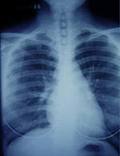 Mesothelioma is typically regarded as a men’s cancer. The primary cause – occupational asbestos exposure – was the biggest threat in male-dominated industries, such as mining, construction and factory work. During the early and mid-20th century, when asbestos was most heavily used by manufacturers, women made up only a small percentage of the workforce. However, female patients continue to come forward, sharing their stories of how they ended up with this aggressive disease.
Mesothelioma is typically regarded as a men’s cancer. The primary cause – occupational asbestos exposure – was the biggest threat in male-dominated industries, such as mining, construction and factory work. During the early and mid-20th century, when asbestos was most heavily used by manufacturers, women made up only a small percentage of the workforce. However, female patients continue to come forward, sharing their stories of how they ended up with this aggressive disease.
Women and Asbestos Exposure
For women, asbestos exposure was more likely to come from a secondhand or environmental source. Secondhand asbestos exposure includes contact with the skin, hair or work clothing of another asbestos-exposure individual. Many female mesothelioma patients recall hugging their parents after they worked with asbestos or washing their spouses’ asbestos-contaminated clothing.
Other female mesothelioma patients attribute their disease to environmental asbestos exposure. In towns with thriving asbestos mines, the fibers often contaminated the air and soil throughout the community. Women may have purchased asbestos-laden gardening soil or taken their children to play in parks where the fibers were present in the dirt.
In one study, these various types of environmental exposure led to a much higher risk for mesothelioma in women; females had a relative risk of 159.9 per 100,000, while men had a relative risk of 114.8 per 100,000.
Although they were less likely to handle asbestos products in the workplace, women did face exposure risks from certain household products. Until the 1980s, items such as talcum powder and hairdryers contained asbestos fibers. Regular use may have led them to develop illness several decades down the road.
Like men, women typically develop asbestos-related diseases 20 to 50 years after they were exposed. However, some studies suggest that women have a better long-term survival with mesothelioma. As a result, some medical professionals recognize female gender (along with younger age and early cancer stage) as a positive prognostic factor for the disease.
Author bio: Faith Franz has spent nearly two years researching and writing for The Mesothelioma Center. Check out our up-to-date tweets about mesothelioma cancer here
Sources:
Smith, D. (2002). Women and Mesothelioma. Chest; 122 (6).
Wolf, A. S., Richards, W. G., Tilleman, T., R., Chirieac, L., Hurwitz, S., Bueno, R. and Sugarbaker, D. (2010). Characteristics of Malignant Pleural Mesothelioma in Women. Annals of Thoracic Surgery; 90.
 As today's cancer treatments increase survivorship, many young cancer patients now look at their potential for parenting children. The decision to have children, if fertility is sustained, is complicated and filled with legal, ethical and financial considerations. The Oncofertility Consortium based at Northwestern University hosts a monthly webcast that explores a variety of reproductive options for individuals who have been treated for cancer and everyone is welcome. Tomorrow's CME lecture will discuss: Contraceptive Options during and following Cancer Treatment. It will begin on March 7, 2013 at 9:50 AM Central US Time and last for one-hour.
As today's cancer treatments increase survivorship, many young cancer patients now look at their potential for parenting children. The decision to have children, if fertility is sustained, is complicated and filled with legal, ethical and financial considerations. The Oncofertility Consortium based at Northwestern University hosts a monthly webcast that explores a variety of reproductive options for individuals who have been treated for cancer and everyone is welcome. Tomorrow's CME lecture will discuss: Contraceptive Options during and following Cancer Treatment. It will begin on March 7, 2013 at 9:50 AM Central US Time and last for one-hour.
 When people with Type 2 diabetes are diagnosed with cancer – a disease for which they are at higher risk – they ignore their diabetes care to focus on cancer treatment, according to new Northwestern Medicine® research. But uncontrolled high blood sugar is more likely to kill them and impair their immune system’s ability to fight cancer.
When people with Type 2 diabetes are diagnosed with cancer – a disease for which they are at higher risk – they ignore their diabetes care to focus on cancer treatment, according to new Northwestern Medicine® research. But uncontrolled high blood sugar is more likely to kill them and impair their immune system’s ability to fight cancer. Mesothelioma is typically regarded as a men’s cancer. The primary cause – occupational asbestos exposure – was the biggest threat in male-dominated industries, such as mining, construction and factory work. During the early and mid-20th century, when
Mesothelioma is typically regarded as a men’s cancer. The primary cause – occupational asbestos exposure – was the biggest threat in male-dominated industries, such as mining, construction and factory work. During the early and mid-20th century, when  An estimated 848, 000 men and 790,000 women will be diagnosed with some form of
An estimated 848, 000 men and 790,000 women will be diagnosed with some form of